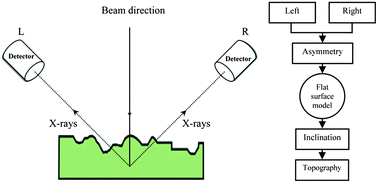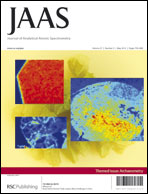Surface topography reconstruction by stereo-PIXE
Abstract
A method of sample surface topography reconstruction is described based on the asymmetry in the X-ray yields acquired by a pair of X-ray detectors positioned at opposite sides of the probing beam. The yield asymmetries in the two simultaneously acquired elemental maps are caused by differences in the X-ray absorption along the X-ray exit route in the sample with a topographically structured surface. The approach presented introduces an asymmetry factor of the X-ray intensity in each of the image pixels to obtain an image asymmetry


 Please wait while we load your content...
Please wait while we load your content...